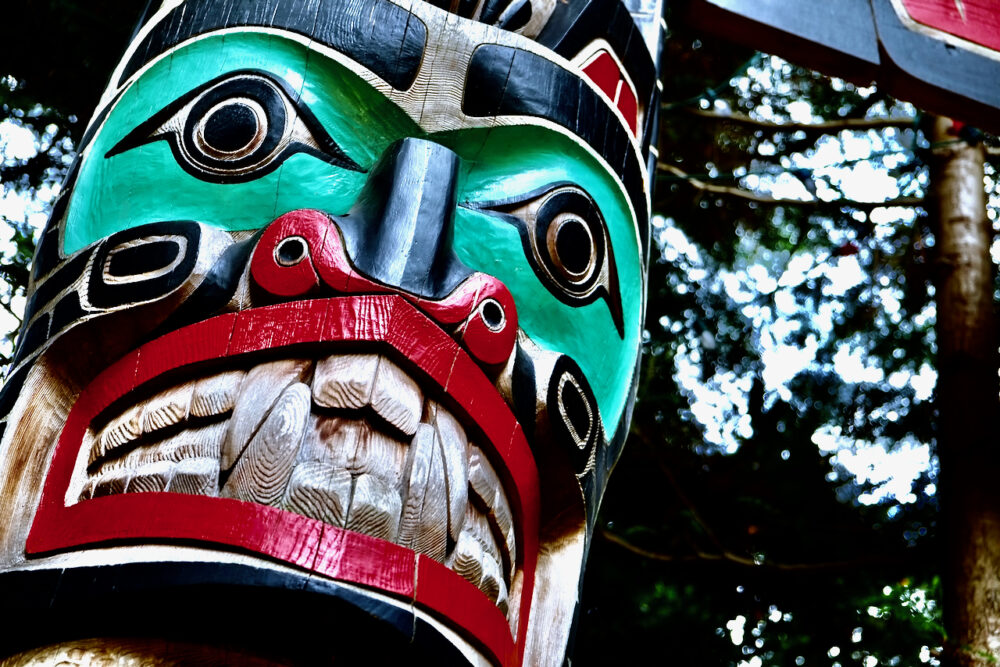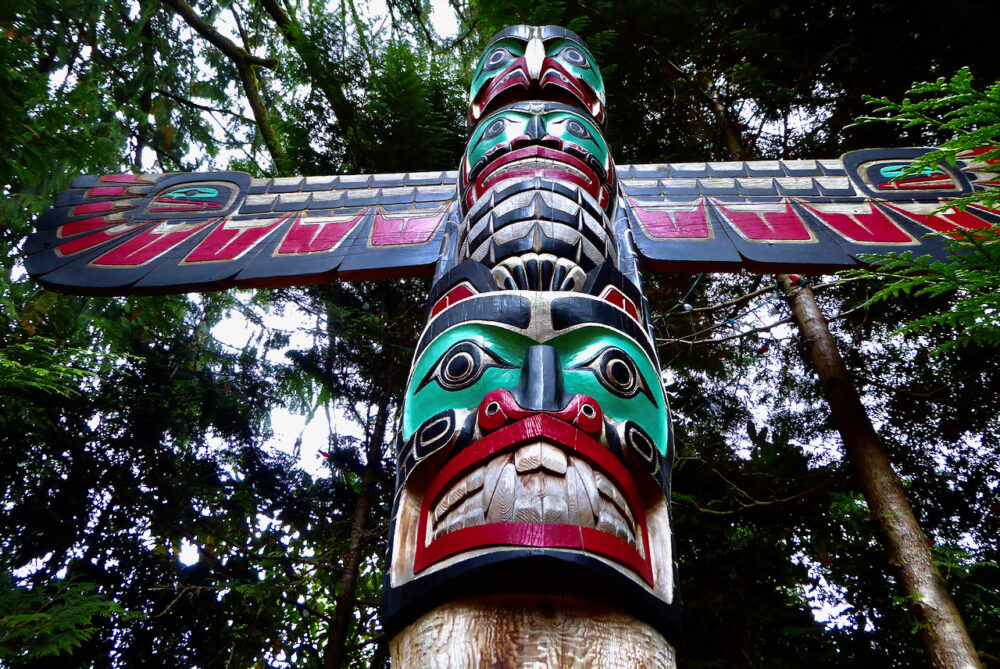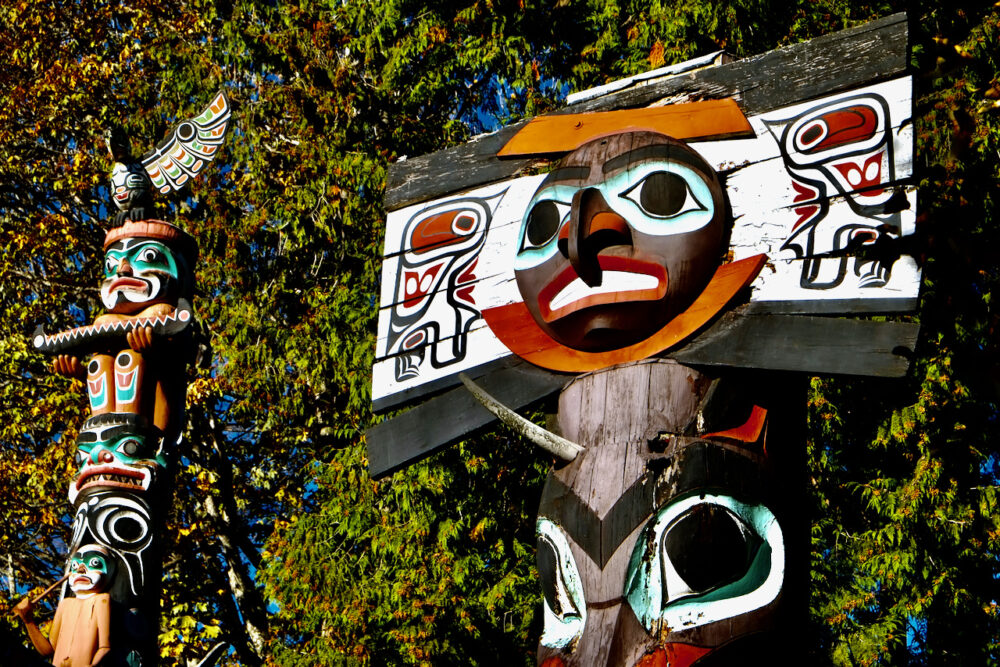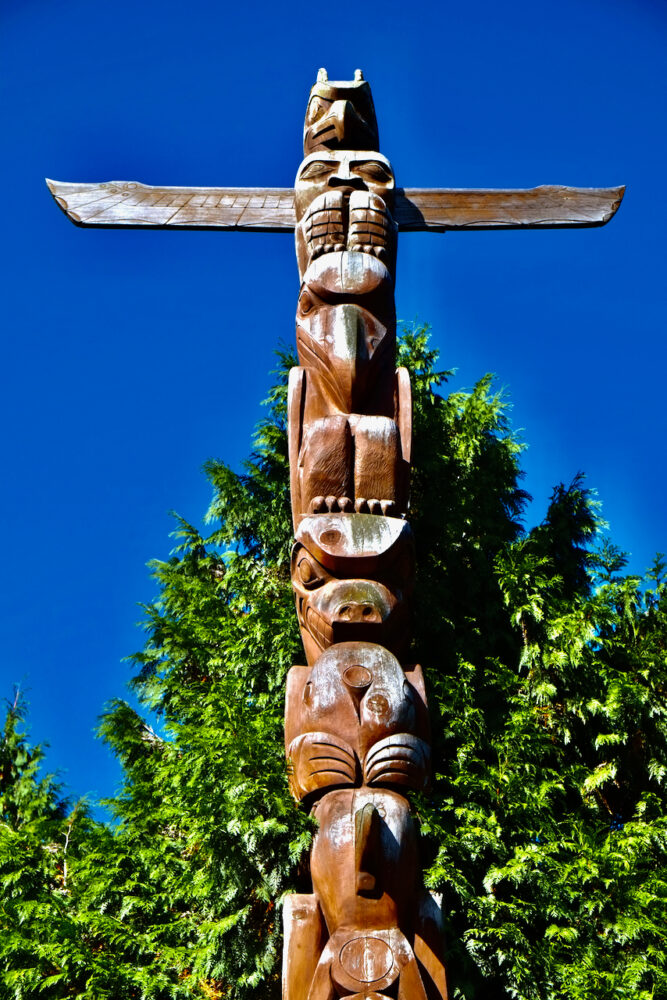Just arrived back home via Air Canada on the early morning hours of the 4th of October, 2024. The recent land and sea adventures took in Alaska in the United States of America and Vancouver, British Columbia, Canada. One of the main reasons for this trip was to get up close and personal with the totem pole culture of the local Indigenous people and the history past and present of the powerful and sacred carved wooden structures. The trip started out on the 12th of September and lasted close to three weeks in total. In Alaska I visited one totem pole site in Ketchikan located at the Saxman Totem Park. The Tlinget Indian village was established in 1894 and is named after Samual Saxman a school teacher to trade who along with two other men who lost while out scouting new village locations for the people of the Cape Fox and Tongass villages. The site has a collection of twenty-four totem poles the worlds largest collection plus the Edmond C. Dewitt Carving Centre and the Beaver Clan House. There is also four other buildings on the site the Park Entrance Kiosk the Fire Hall and School House (1894) and finally the Village Store Gift Shop. Many of the poles at the Saxman Totem Park have been restored under Federal Work Project directed by the US Forest Service beginning in 1939.
I also visited one totem pole site in Prince Rupert, British Columbia, Canada that overlooked the beautiful and stunning waterways of the city. In Vancouver I visited four areas that had totem pole collections at Bill Reid’s Museum, Stanley Park, Capilano Suspension Bridge and finally Vancouver International Airport. I have always been intrigued by the history and cultural aspects of the indigenous totem poles as far back as the old black and white and later colour television westerns that displayed then as heathen objects with crazed like warriors circling below. Once again they were not featured in a good light back in the day but in these modern times young and up and coming artistic wood carvers have reinvigorated general interest in these tall mountain like structures. Pictured is one image of a extensive series of images I shot during my trip to Capilano Suspension Bridge. It was indeed an education learning about the totem poles from a new and younger generation of indigenous artists.
I guess time flies when one is having some fun and chilling out at cool places on Mother Earth! It is almost one year since I returned from Canada and Alaska and the memories are just like it was yesterday. The Holland America fourteen day cruise to Alaska and Prince Rupert in Canada was extra special in so many ways with amazing dark and shadowy mountain scenery as our ship the Noordam slowly sailed in and around Kodiak, Seward, Anchorage, Glazier Bay and Sitka. The extra special treat was visiting the Kenai Fjords Glazier while we were docked at Seward which was truly awesome and a really great way to experience a ice crackling glazier up close and personal. If I had to pick a few highlights it would certainly be the boat trip on the Aialik Voyager to the glazier. And although visiting Stanley Park in Vancouver was cool bananas with its most interesting group of totem poles I would say that chilling out at Capilano Suspension Bridge walking the cliff face was a touch nervy when looking down but I survived and finally found one totem pole that spoke to me and I duly did the business through the lenses of my cameras. Plus the two three day stays in and out at the Loden Hotel in Vancouver were excellent indeed with the penthouse stay second time around the icing on the cake for this displaced Scotsman!


















